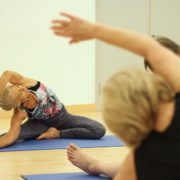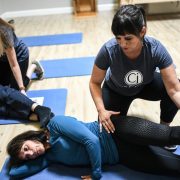3 Reasons Your Lower Back Stretches Aren’t Working
Why Your Lower Back Still Feels Tight — Even When You Stretch Every Day
If you’re dealing with lower back pain in Portsmouth NH and stretching every day — but still feel tight, stiff, or sore — you’re not alone.
At our physical therapy clinic in Portsmouth, New Hampshire, we see this all the time. People are consistent. They’re motivated. They stretch daily.
And yet — their back still feels tight, restricted, or painful.
The truth?
Stretching your lower back isn’t always the solution. And in many cases, stretching can actually make back pain worse instead of better.
If your lower back still feels tight despite everything you’ve tried, here are three common reasons why stretching may not be helping — and what you can do instead.
1. Your Stretching Technique Is Working Against You
Most people assume that simply doing the stretch is enough.
But how you stretch is just as important as what you stretch.
At our Portsmouth physical therapy office, we often see people stretching while:
-
Holding their breath
-
Tensing their glutes or shoulders
-
Forcing positions instead of easing into them
When your body feels strained, your nervous system responds by tightening — not relaxing. This makes tight muscles even tighter.
If this sounds familiar, try slowing your stretches down. Focus on calm breathing, gentle movement, and releasing tension instead of forcing range of motion.
Sometimes it’s not what you’re doing … it’s how you’re doing it.
2. You’re Stretching the Wrong Thing for the Problem You Actually Have
Generic stretches like child’s pose, hamstring stretches, or forward bends may help if your stiffness comes from:
-
Sitting all day
-
Muscle fatigue
-
General stress
But if your pain is mechanical — such as:
-
Disc irritation
-
Sciatic nerve involvement
-
Poor movement patterns
-
Hip or pelvic imbalance
… those same stretches may not help at all. In fact, they can aggravate lower back pain even more.
This is why one-size-fits-all routines fail.
As a mechanical pain specialist, I assess:
-
Which movements make pain better or worse
-
How your back responds to direction of motion
-
How your body compensates
This allows us to prescribe exact stretches and exercises for your condition — not generic ones. That’s what true corrective physical therapy looks like.
If your current routine hasn’t changed your symptoms, the issue may not be effort — It may be accuracy.
3. Your Lower Back May Not Need Stretching At All
This surprises many people.
A back that feels “tight” is often reacting to weakness or instability nearby —
especially in the hips, pelvis, or core.
When your body feels unsupported, it tightens muscles as a protective reflex.
If your back stiffens after:
-
Core workouts
-
Prolonged sitting
-
Busy days
-
Certain movements
…your real issue may be weakness, not flexibility.
In these cases, strengthening the right muscles — and teaching them to work together — provides far more relief than stretching ever will.
The Bottom Line: Lower Back Pain Is Fixable
If daily stretching hasn’t helped your lower back pain in Portsmouth NH, it’s time to stop guessing.
Your tightness may be happening because:
-
Your technique is off
-
Your stretches aren’t specific enough
-
Stretching isn’t what your body needs at all
Once the true mechanical reason behind your pain is identified, recovery becomes faster — and far less frustrating.
Get Expert Help for Lower Back Pain in Portsmouth NH
If your lower back stiffness or pain isn’t improving, working with a mechanical back pain specialist in Portsmouth NHmay be your next step.
Correct diagnosis leads to:
– Faster pain relief
– Fewer flare-ups
– Less trial-and-error
– Better long-term results
About the Author
Dr. Carrie Jose, DPT, is a Physical Therapy Specialist and Mechanical Back Pain Expert and the owner of CJ Physical Therapy & Pilates in Portsmouth, NH.
She regularly writes for Seacoast Media Group and helps residents throughout the Seacoast overcome back pain without medication, injections, or surgery.
To request a copy of her free guide: “5 Simple and Easy Ways to Get Rid of Back Pain”
Visit: www.cjphysicaltherapy.com
Or call: 603-380-7902





